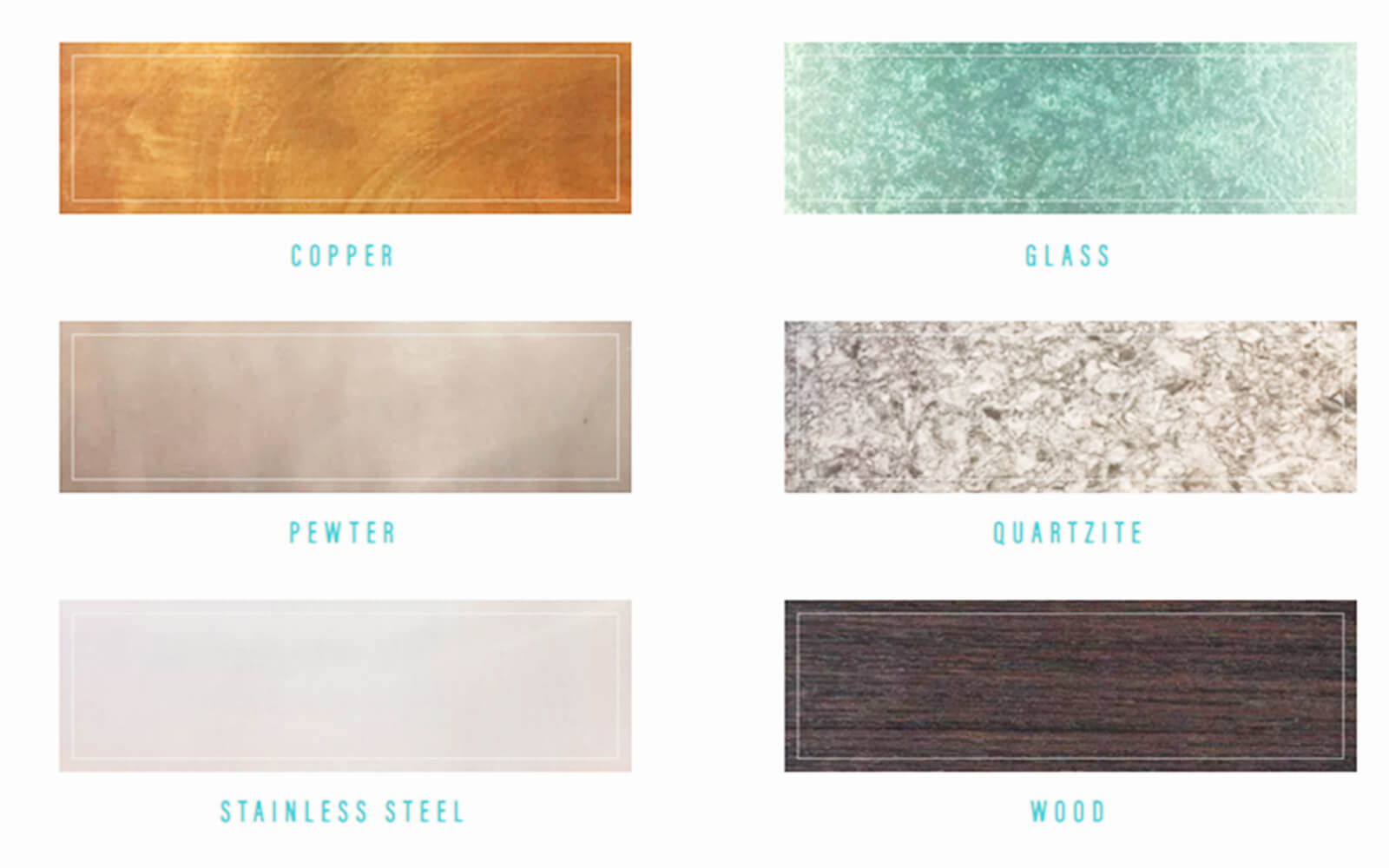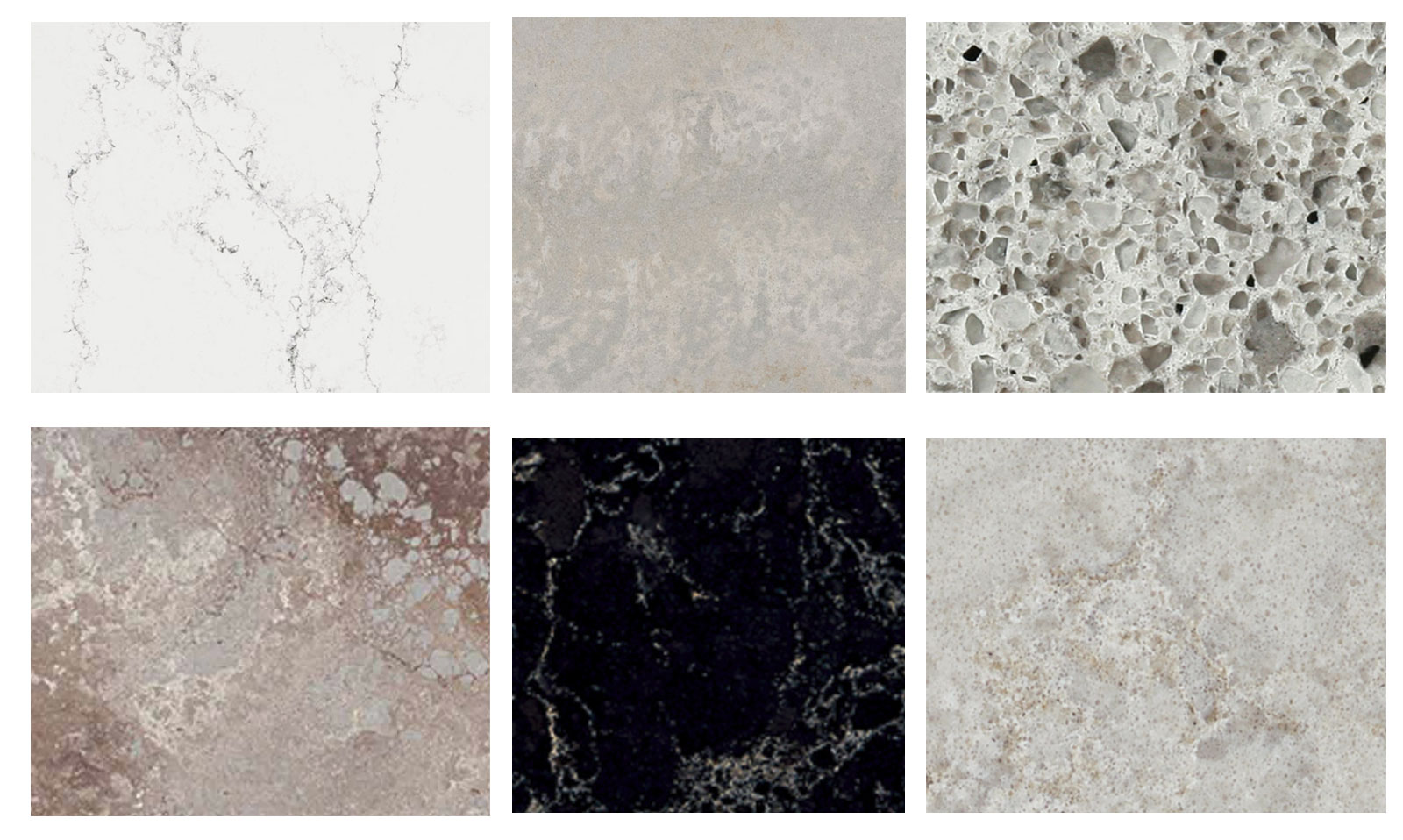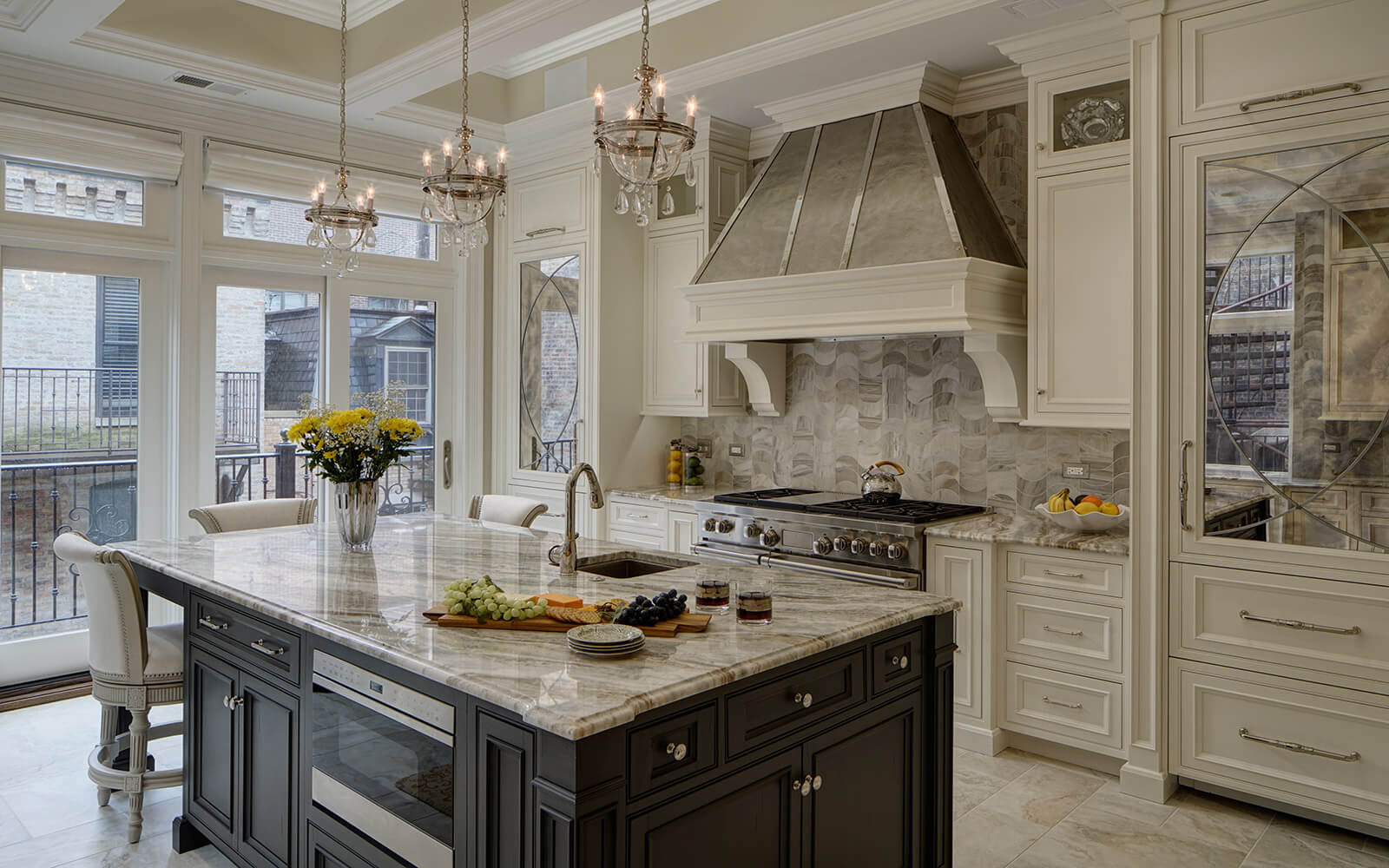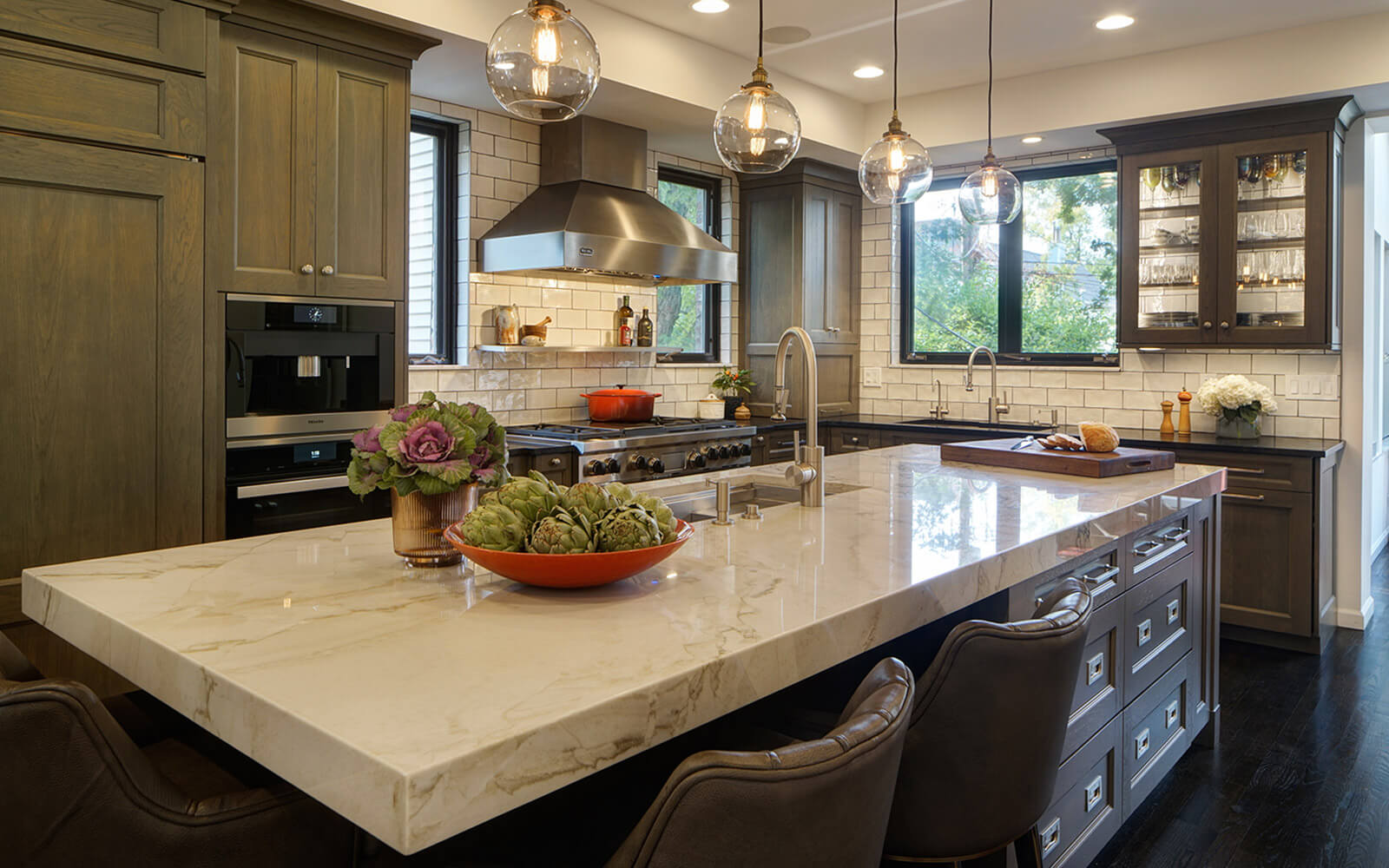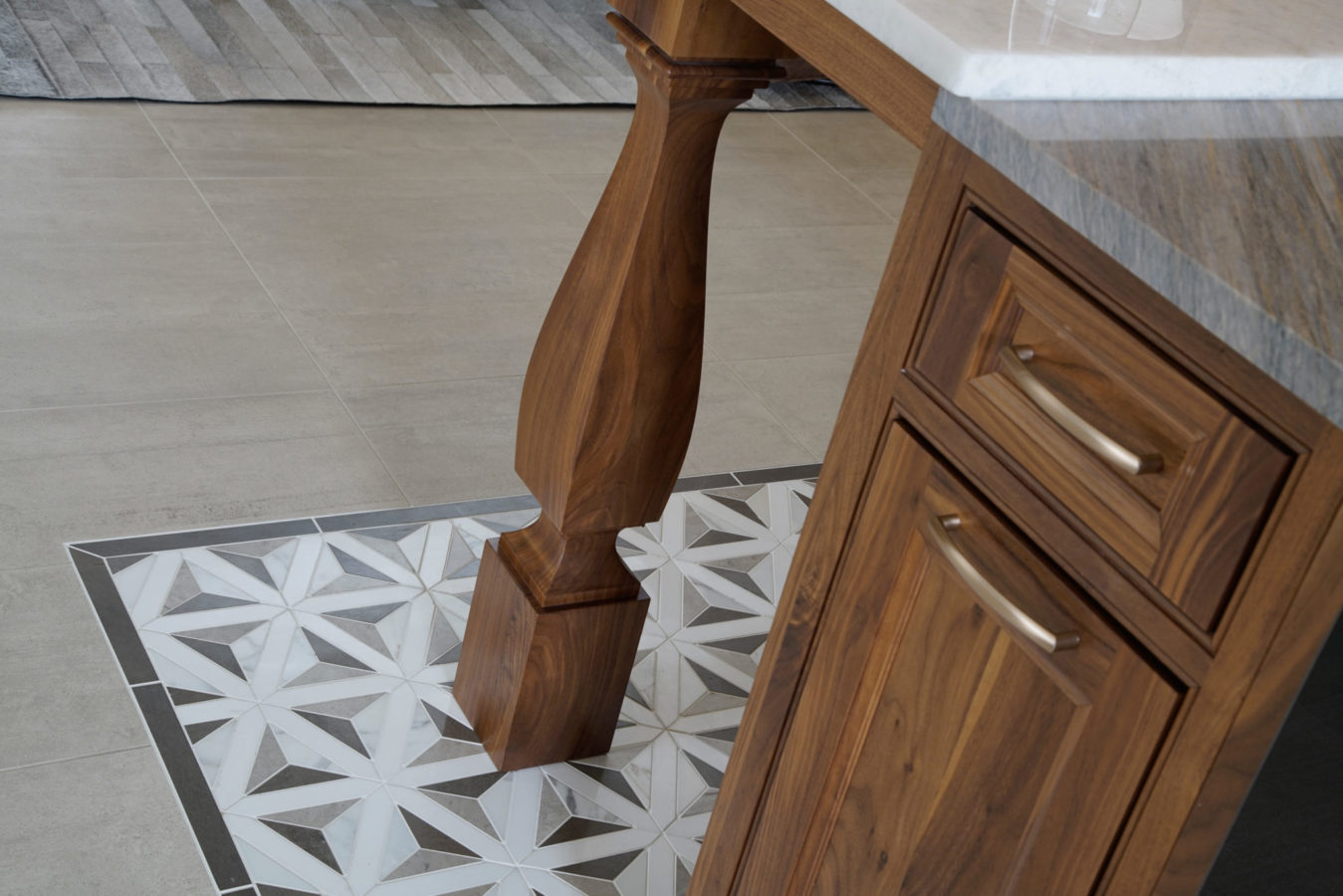Selecting Kitchen Design Materials
A Guide to Selecting Kitchen Materials
How to Choose the Right Work Surfaces for your Kitchen Remodel
If you’re designing your kitchen and you’re not sure which worktops to choose, any professional kitchen design team can help with a guide on how to choose the right work surfaces for your kitchen.
Choosing the right work surface for your kitchen shouldn’t be a rushed decision. You want something that looks good and fits within your budget that is practical and durable too. Work surfaces often cover the expanse of the space and they are likely to be the first thing your eye is drawn to when glancing at an image of a kitchen.
Don’t underestimate the power of worktops to transform a kitchen. Going for gleaming black granite surfaces can make a dramatic statement and create a trendy modern space, whereas chunky wooden countertops bring an instant wholesome and homely appeal.
Durable and stylish kitchen worktops are also deemed highly desirable by real estate agents in adding value to your home. But how do you choose the right work surface for your kitchen? Read on for the advantages and potential disadvantages of the different worktop materials on the market before you make your decision.
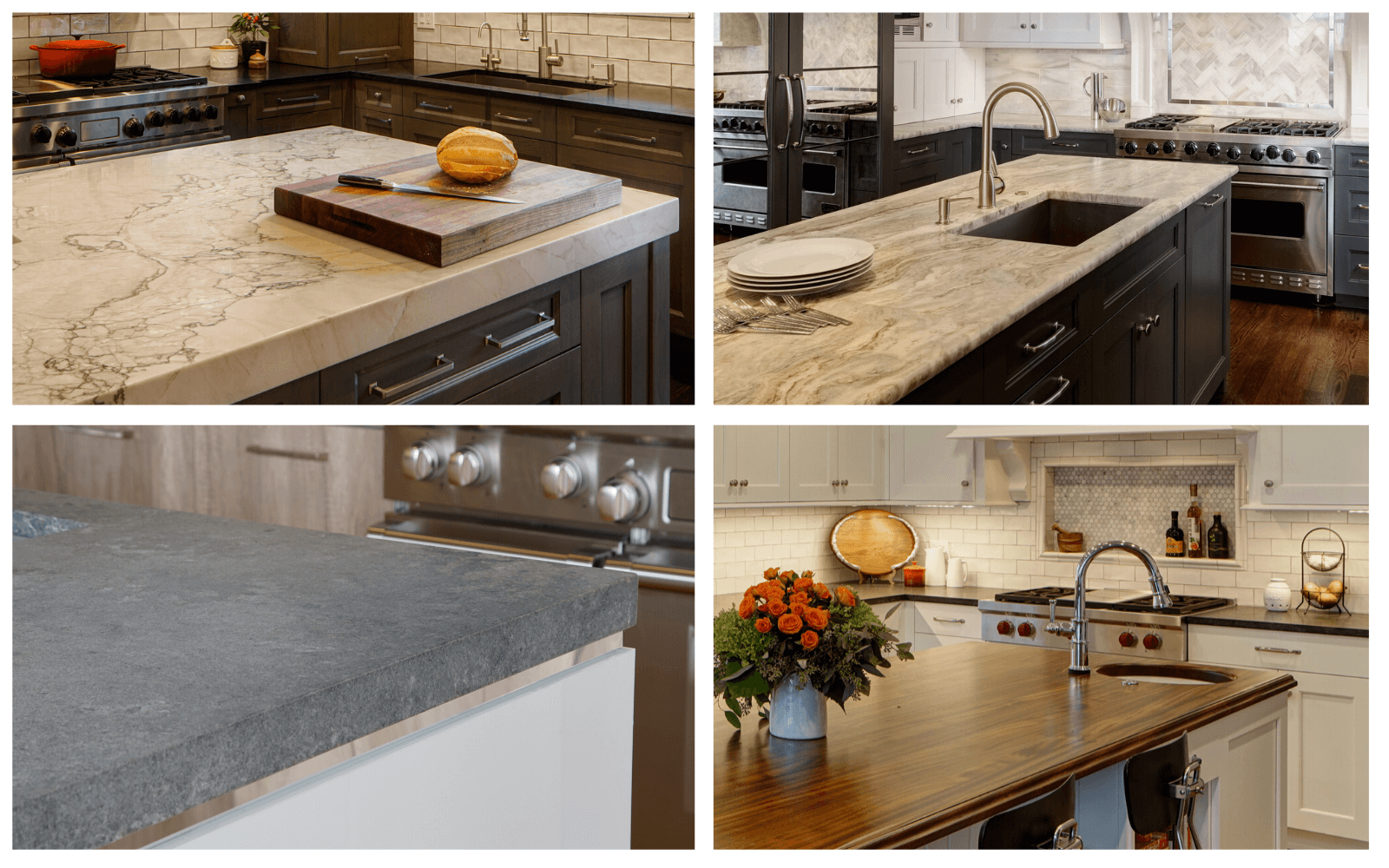
Wooden Kitchen Work Surfaces
Advantages
The reason that people choose wood kitchen surfaces is for their appearance – they instantly add character and a homey warmth to any kitchen. If you like the look of a traditional country kitchen or own a period property, this might be the ideal choice of work surface. After being eclipsed by ornate stones like granite and marble and maintenance-free engineered materials like quartz and solid surfacing, natural wood countertops are enjoying a real revival.
There is also a large variety of wood available so that you can choose something that matches the look you are going for in your kitchen. Wood types for work surfaces include:
-
Ash
-
Walnut
-
Iroko
-
Teak
-
Maple
-
Oak
You can also choose from a large selection of stains, finishes and edge treatments which also offer a different style to your kitchen. Wood can also be salvaged and re-purposed for your work surface and most woods are recyclable.
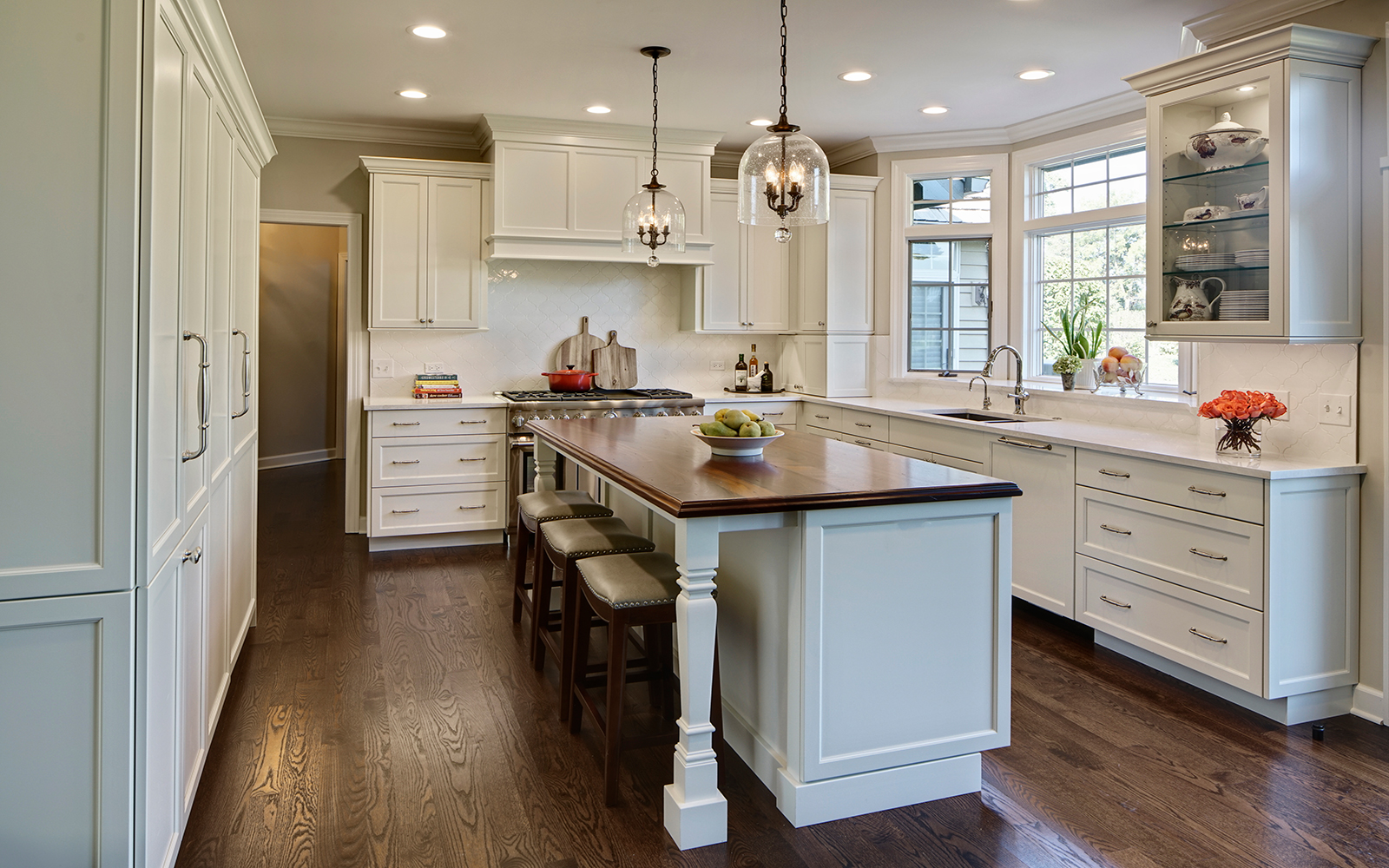
Disadvantages
The one big disadvantage to a wooden kitchen surface is that it is high maintenance. Wood is much softer than stone surfaces and can easily be damaged by heat and water and stained by food. You will need to put down a heat proof mat before placing most objects on the kitchen surface. Even the bottom of a wet drink can or a dripping hand soap by the kitchen sink might stain the surface. Fruits like strawberries or watermelon can also stain wooden kitchen worktops. Ideally, think about having a different material around the kitchen sink area as this area is hard to keep dry and the wood can slowly turn black if exposed to water over time.
You will also have to be careful what cleaning product you clean the wood surface with. Preferably use hot soapy water and the make sure you immediately dry the surfaces by hand. If you clean your wooden worktops with an antibacterial cleaner or kitchen wipes, you will need to re-oil the surface once a month as the cleaning product will wear down the protective layers.
Quartz Kitchen Work Surfaces
Advantages
Quartz is very tough, durable and man-made. It is resistant to scratches and stains and it doesn’t need to be treated or sealed. Quartz has a luxurious high gloss appearance and is easy to clean, disinfect and wipe down with any cleaning product. There is a huge variety of colors and designs on the market so you can choose something that really appeals to you.
Disadvantages
Quartz work surfaces can be expensive, but you get what you pay for. Also, you need to make sure that you put a heat-proof mat on the quartz surface before putting a hot pan down, as the heat can damage the surface.
Granite Kitchen Work Surfaces
Advantages
Granite has the look of luxury so it will instantly add an upmarket look to your kitchen. It is resistant to chipping and scratching and is highly durable. It is also very easy to clean. No piece of granite is the same as it is a natural stone so you can source something that is unique to your kitchen
Disadvantages
In order to remain durable and prevent stains from forming, granite kitchen countertops need to be sealed once a year. While good quality granite is resistant, you should still be careful about mopping up spills quickly to prevent staining – especially oils, wine and acids. Granite is very heavy and difficult to transport and install, so you’ll need to make sure you use a reliable and trusted installer.
Marble Kitchen Work Surfaces
Advantages
Marble is also a natural stone and kitchen surfaces will immediately create an expensive look in your kitchen. It is also a very cool surface which makes it useful in a hot climate – or if you regularly make cookies (if this is the case, invite us over) Marble is fairly chip and stain resistant. It can be easily cleaned and is naturally waterproof. Plus, the grains of the marble can also disguise any stains.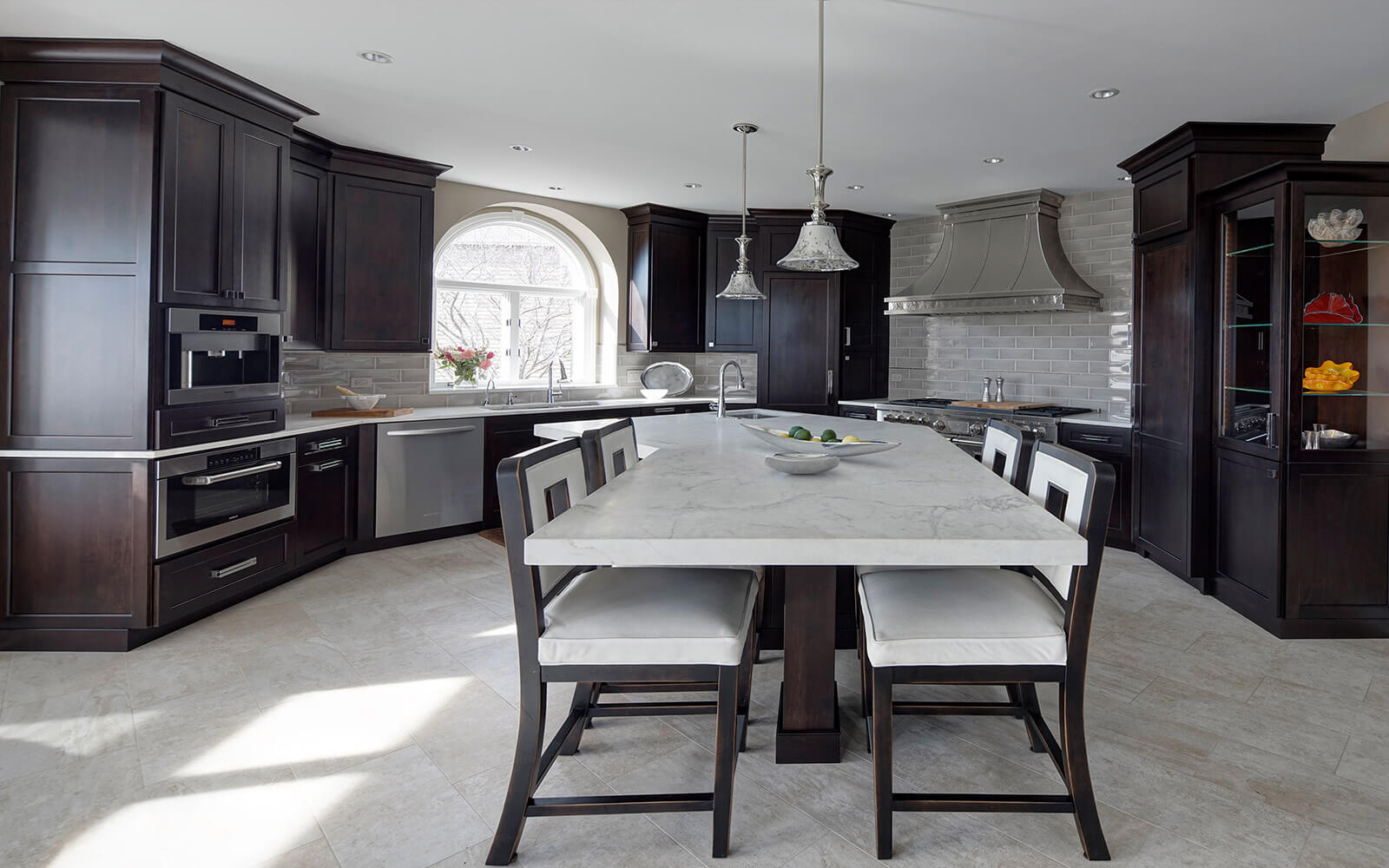
Disadvantages
Marble is a very porous surface so you will need to seal it annually. You also need to continue to be very careful with acids as they can cause etching. For instance, just leaving a slice of lemon on a marble countertop can leave a mark. Wine and fruit can also easily stain marble worktops.
Quartzite Kitchen Work Surfaces
Quartzite is often confused with quartz, but it’s a separate, naturally occurring stone that is quarried in a similar way to granite.
Advantages
If you like marble, you’ll love quartzite. It has the look of marble, but it’s much easier to care for, so if maintenance is an issue that keeps you from marble, this is a great alternative. Plus, it’s a very durable surface. Quartzite tends toward the hard side of natural stone, so that means it won’t wear down or develop problems in the short term.
Cleaning quartzite is simple. Soap and warm water will make the surface look fantastic.
Disadvantages
Lots of surfaces can stand up to sharp knives. Sadly, quartzite is not one of them. Knives will mark this surface up when used directly on it. A cutting board for chopping is advised.
While heat helped quartzite form, that doesn’t necessarily mean it stands up well under direct heat. That means you’ll need potholders or trivets when dealing with a pan or dish directly from the oven or stovetop. Additionally, because it’s a naturally formed stone, quartzite is limited on the kinds of colors that you can choose from. You’ll mainly find whites and greys with some shades in between. If you’re looking for more color in your kitchen countertops, quartzite offers a little, but not a great deal of vivid selections.
Soapstone Kitchen Work Surfaces
Advantages
Soapstone is very hygienic in the kitchen as it is non-porous and so therefore very resistant to staining and bacteria. It is not as durable as other stone surfaces, but it can be oiled and sanded if any damage occurs.
Disadvantages
There is no sealing needed for soapstone (like wood for example) but it does need regular oiling, which can be high maintenance.
Porcelain Kitchen Work Spaces
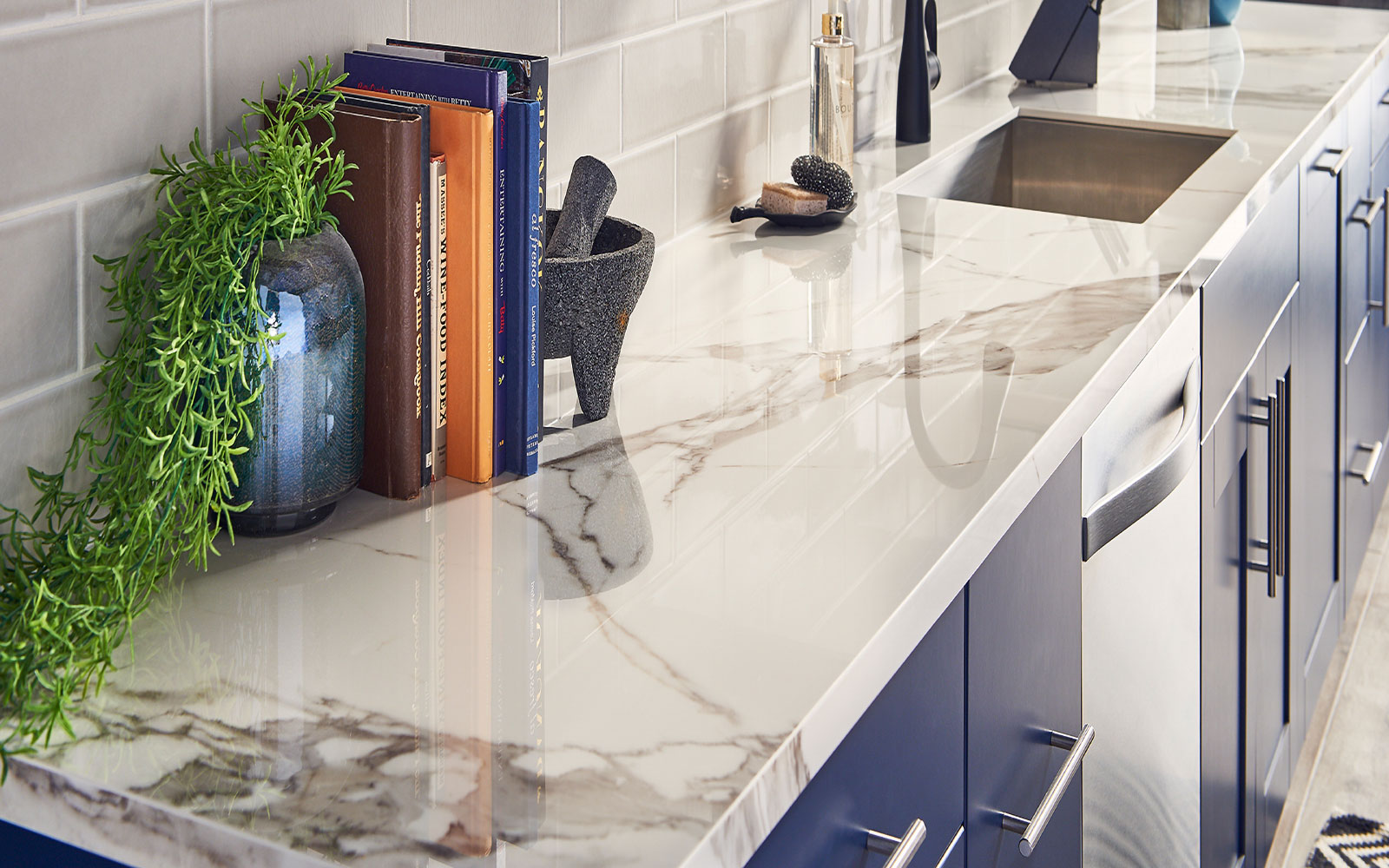
Advantages
Like granite, porcelain is available in both tile and slab form. Unlike granite, however, homeowners benefit from color/pattern consistency. Since patterns and colors are fabricated, you can select a slab you love and find an exact pattern or shade match. Porcelain is considered the most durable tile option on the market (it’s 30% stronger than granite, for example). Also, porcelain tiles are almost non-porous, which is a big difference when compared with their ceramic counterparts. This means porcelain has an extremely low absorption rate, virtually immune to staining and moisture absorption.
Disadvantages
Porcelain is susceptible to blunt impacts. If you drop a heavy pan from an upper-cabinet or overhead hook – it can chip or crack the slab. It could also affect resale value. While porcelain slabs and tiles are gaining popularity and are highly desired by some, they’re not yet considered the “luxury finish” that granite and quartz are. This could potentially affect resale value or a potential buyer’s desire to purchase.
How to Choose the Right Cabinetry for your Kitchen Remodel
Cabinets can be the biggest expense in a full kitchen remodel, accounting for up to 40 percent of the overall budget. They also set the visual tone for the kitchen, and they’re a huge part of how well it functions. Bottom line: Get the cabinets right and your chance of loving your new kitchen will go way up. No matter how big or small a renovation is, selecting your kitchen cabinets can be one of the most intimidating decisions you have to make. However, there area a few basic areas to consider and questions to ask yourself that will help guide the way.
Choose a Cabinet/ Door Combo that Works for You
In most kitchens, you’ll find base cabinets and wall cabinets, both traditionally equipped with doors rather than open shelving or drawers. Oftentimes, upper cabinets are used more for selective display, while base cabinets hold the bulk of heavier storage of pots, pans, and other dish ware that might not look so great on a visible shelf.
A popular feature for base cabinets is the pull-out drawer option, instead of a swinging door. What’s more, many modern kitchens are getting rid of upper cabinets entirely, favoring a more clean, open space that utilizes only base cabinets with a backsplash behind.
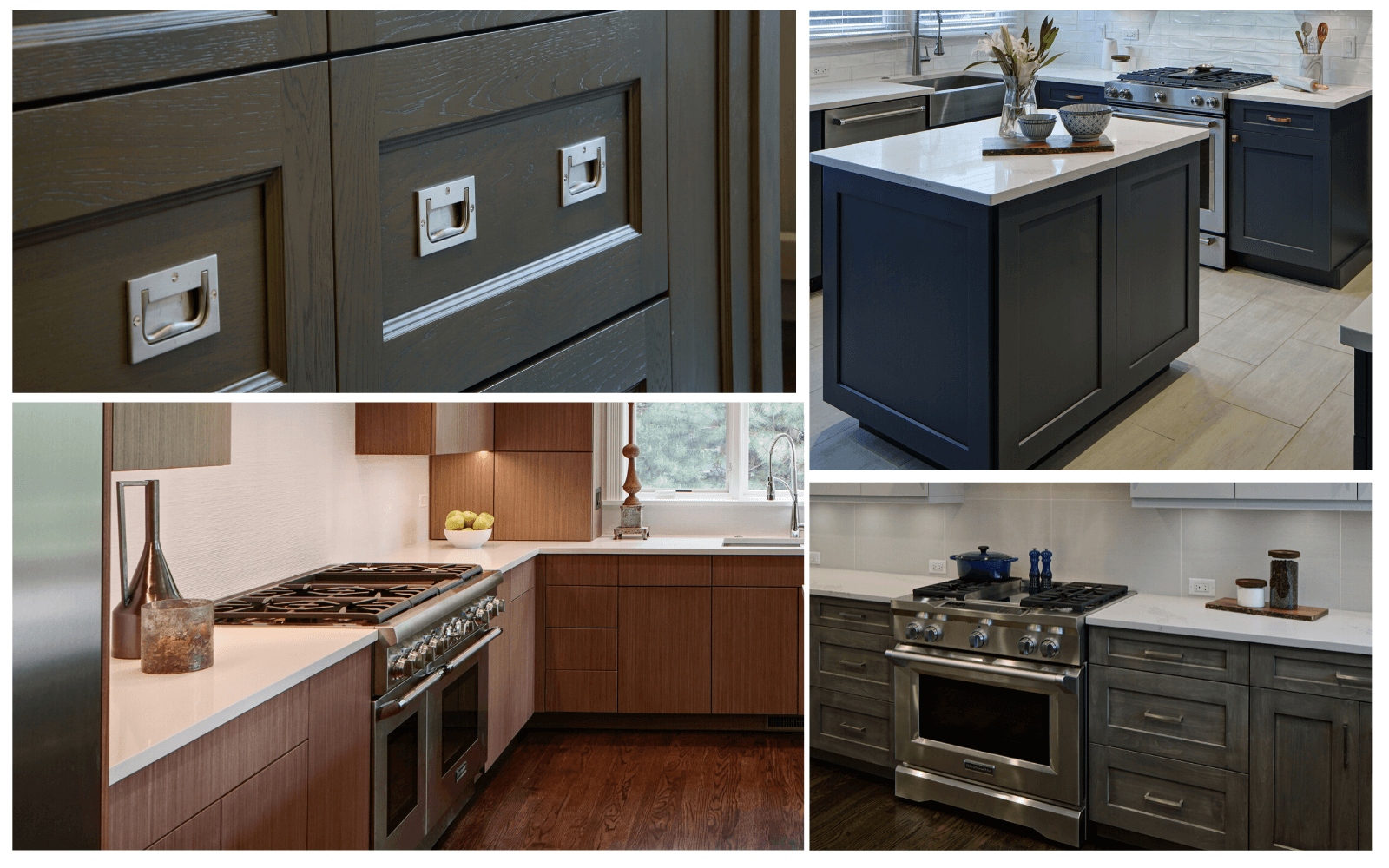 “Ergonomically, it brings contents to you rather than you having to bend over and dig through layers to get what you need,” says Drury Designer Samantha Schoell. Hardware accessories neatly organize plates, pots, pans and lids, plastic-ware, you name it.
“Ergonomically, it brings contents to you rather than you having to bend over and dig through layers to get what you need,” says Drury Designer Samantha Schoell. Hardware accessories neatly organize plates, pots, pans and lids, plastic-ware, you name it.
Your cabinet door style can be one of the most important factors in your kitchen’s new design. Not only are cabinet doors one of the most visible design elements in a kitchen, but they can also be one of the most expensive. From the elaborate to the simple, there’s a door style for every home design.
Shaker
The Shaker style cabinet door is one of the most common door style in kitchens today. This five-piece flat-panel style has a frame made from four pieces and a single flat center panel for the fifth piece.
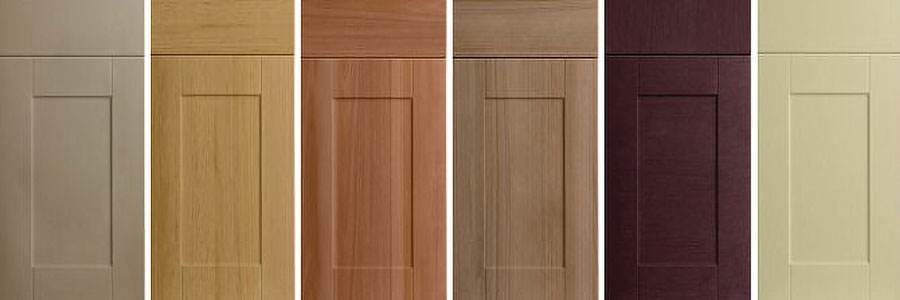
Flat Panel
Simple but stylish, the flat-panel cabinet door is void of any expensive details. Its hard lines and minimalist form make it a great fit for contemporary and modern interiors. The center panel of the cabinet door is flat rather than raised or contoured. Flat panel doors are favored by those who prefer sleek, clean designs.
Many flat doors come in decorative laminate or wood. Laminate tends to be more budget friendly and offers a greater variety of colors and sheens.
Inset
Although this style tends to be one of the most expensive on the market, it’s a classic look that’ll last for generations. The inset door gets its name because it is set inside of the cabinet frame — typical cabinet doors rest on the outside of the frame. The door is designed and constructed with extremely precise measurements so that it nests inside the frame and opens and closes properly, even when the wood expands and contracts.
Small hinges are mounted right on the face frame (the visible frame around the cabinet opening) or just inside it; the hinges are often visible when the door is shut.
Partial Overlay
A modern upgrade from inset, partial overlay doors and drawers are mounted over the face of the box, covering the opening completely and partially covering the finished face frame. This construction also makes it possible to install more functional hardware, though the face frame still reduces the amount of accessible space inside the cabinet.
Full Overlay
The most modern iteration is a full overlay, meaning that the door or drawer face completely overlays the box — it covers not just the opening but the entire face of the box. There is no visible face frame with these cabinets when the doors are closed, which means hinges are utilized that allow the doors to open without hitting adjacent doors and drawers.
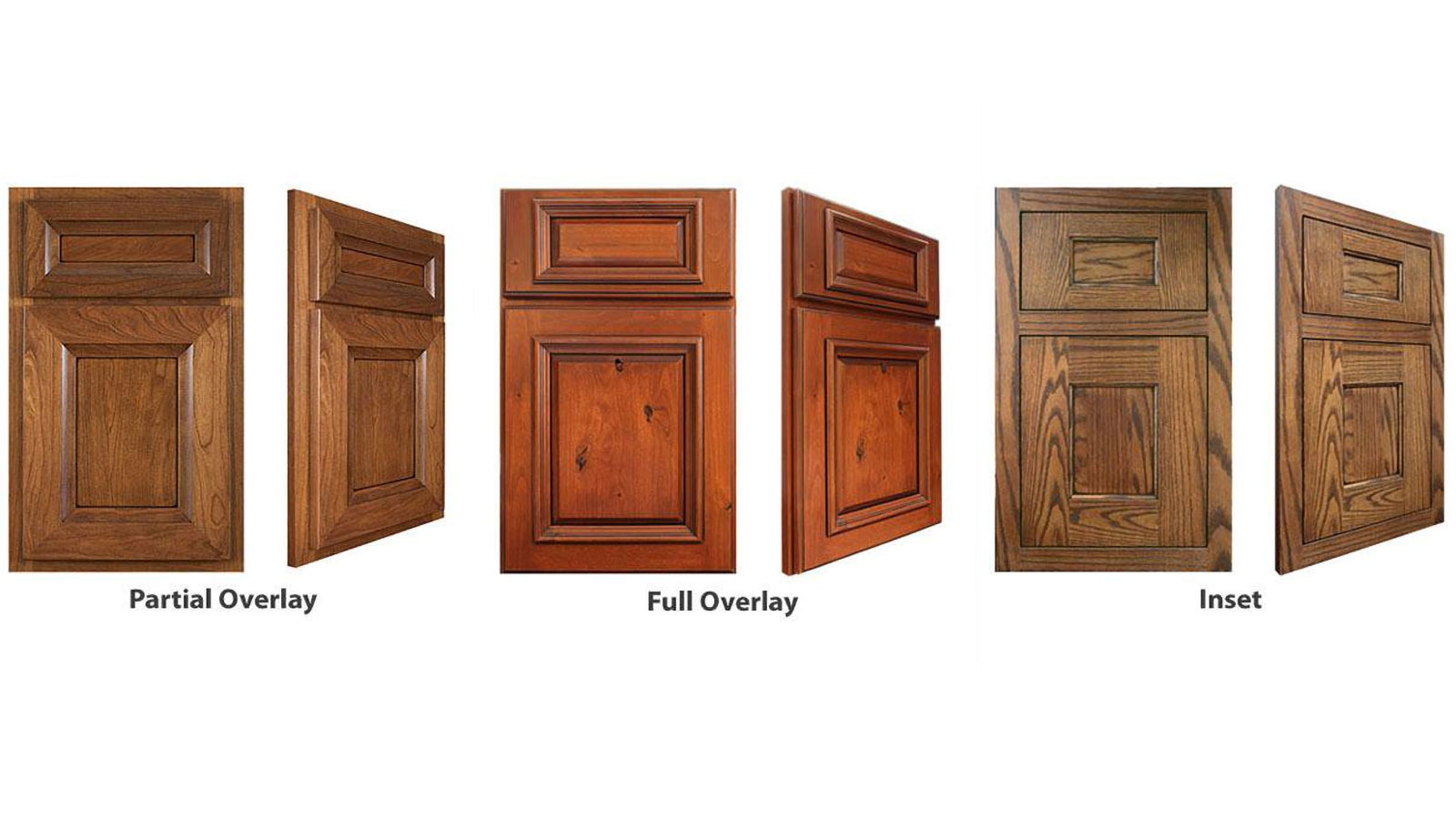 Custom
Custom
Can’t find any door style on the market that really compliments your unique design intention? Design your own! Contact a local designer or craftsperson to help you create a personalized design.
Selecting Flooring for your Kitchen
If you spend hours on your feet slicing, dicing, and stirring consider floors with a bit of softness and resilience. Tile floors, for instance, can be uncomfortable to stand on for long periods. Wood is better for reducing leg fatigue. And resilient floors, with their elasticity, are the most comfortable for feet. Whatever you choose, a soft mat or rug can add comfort as well.
Ease of Cleaning. Between food spills and tracked-in dirt, kitchen floors can get pretty grimy. To minimize time spent on maintenance, choose a material that’s easy to clean, water resistant, and not prone to staining.
Cost. If you’re planning a remodel, your budget is divided among countertops, cabinetry, lighting fixtures, and more. Where does flooring fit in the plan?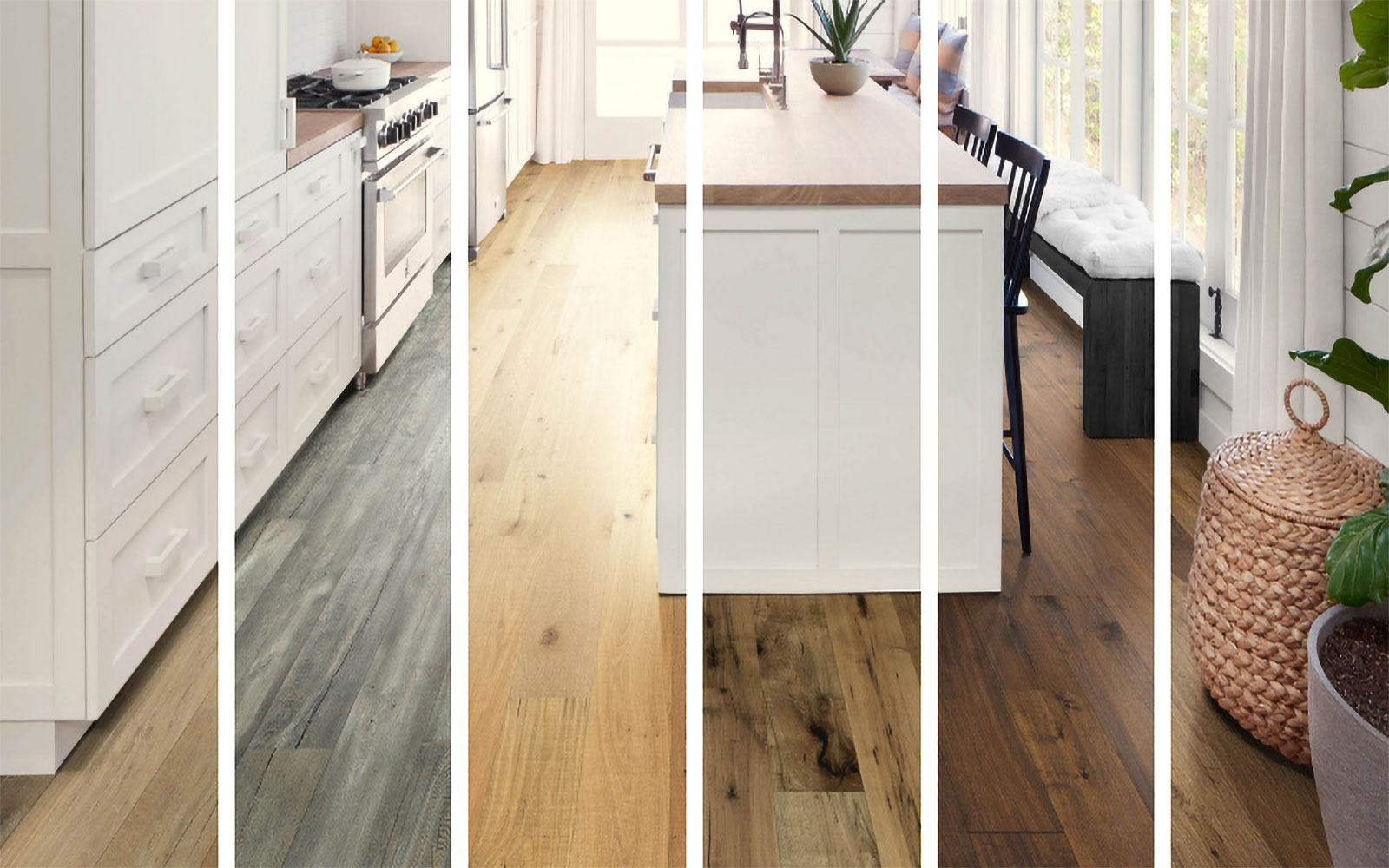
Hardwood Floor in the Kitchen
Considered by many to be the ultimate floor choice, hardwood never goes out of style. This classic floor lends natural beauty and warmth to your kitchen; every board brings rich details achieved with nature and craftsmanship. It’s not the most comfortable floor to stand on for long periods of time, so dedicated cooks might want to put down mats or area rugs. But hardwood stands up to spills and stains.
According to Gail Drury, CMKBD “Hardwood is often installed throughout the house for a seamless look. Though hardwood lasts for years, you can get fresh looks down the road by refinishing, staining, and even painting the kitchen floors.”
Laminate Flooring in the Kitchen
If your kitchen encounters frequent food spills and the pitter-patter of kids or pets, this durable surface may be the solution. Laminate mimics the look of hardwood or tile and comes with a lower price tag. The surface resists stains and scratches, and cleanup is a snap.
Unlike wood, it doesn’t gain character and can’t be sanded. But when it comes to today’s high-end options, even experts can have a hard time distinguishing high-end laminates from the real thing.
Vinyl Flooring
A popular choice for kitchens, this resilient flooring is a versatile, economical option. Vinyl comes in a wide range of colors and patterns that mimic hardwood, ceramics, and stone. The surface’s elasticity and warmth make it comfortable to stand on, and plates, cups, and glasses often won’t break when dropped.
Unlike the dated floors of past generations, today’s vinyl features better textures and colors for a more realistic appearance, thanks to improvements in the rotogravure (engraving) process for the surface. You can buy vinyl with textures that look like slate, leather, even wood.
Tile in the Kitchen
Tile comes in many styles and can stand up to the heaviest use your family can dish out. “Tile floors are a great choice for kitchens. Tile can withstand heavy foot traffic, water, spills and doesn’t absorb odors or bacteria” says Alicia Saso, AKBD. “It can stand up to pets and children and it can go with any style decor. And tile can be arranged in a multitude of patterns.”
The hardness that makes tile so desirable as a kitchen floor surface can also be a drawback. Serious cooks will want to wear comfortable shoes or put down floor mats or area rugs, because standing on tile for long periods of time can be tough on legs and backs. Its surface is cold to the touch of bare feet. And dropped dishes, mugs, and glasses can break on impact.
Considerations When Choosing Tile Flooring
There are three primary types of tile:
Ceramic. Made from clays, It’s easy to install but slightly more prone to damage than porcelain.
Porecelain. Made from sands and minerals, it’s harder and more dense than ceramic tile and water resistant. But it’s harder to install.
Stone. Beautiful and durable, but requires sealing and is the most expensive.
Choosing all the materials for your remodel can be a daunting process but with the help of professional designers, your choices will be educated, and your kitchen will be beautiful and functional. We’d love to send one of our qualified designers to your home and start exploring options with you! Contact us HERE or chat with us below to find out more.
About Drury Design Kitchen and Bath Studio
Founded by Gail Drury, CMKBD in 1987, Drury Design’s Client Focused Design™ approach integrates design recommendations, materials selection, and construction management into one seamless customer design, project management, and build experience. For kitchen, bath, and home remodeling ideas view Drury Design’s design portfolio or stop by the studio at 512 N. Main Street in downtown Glen Ellyn, Illinois.

